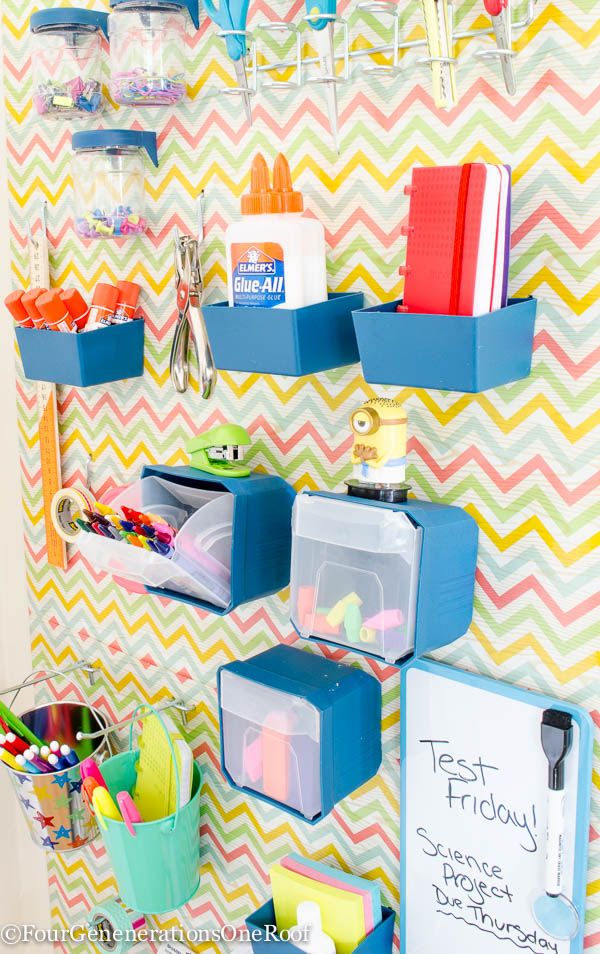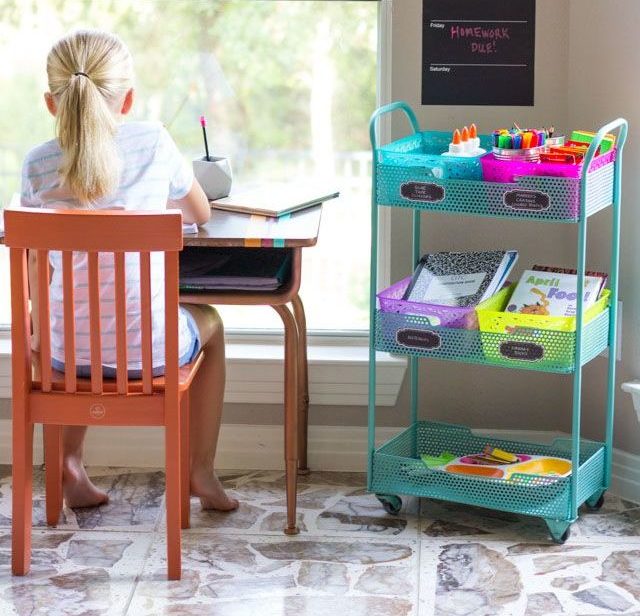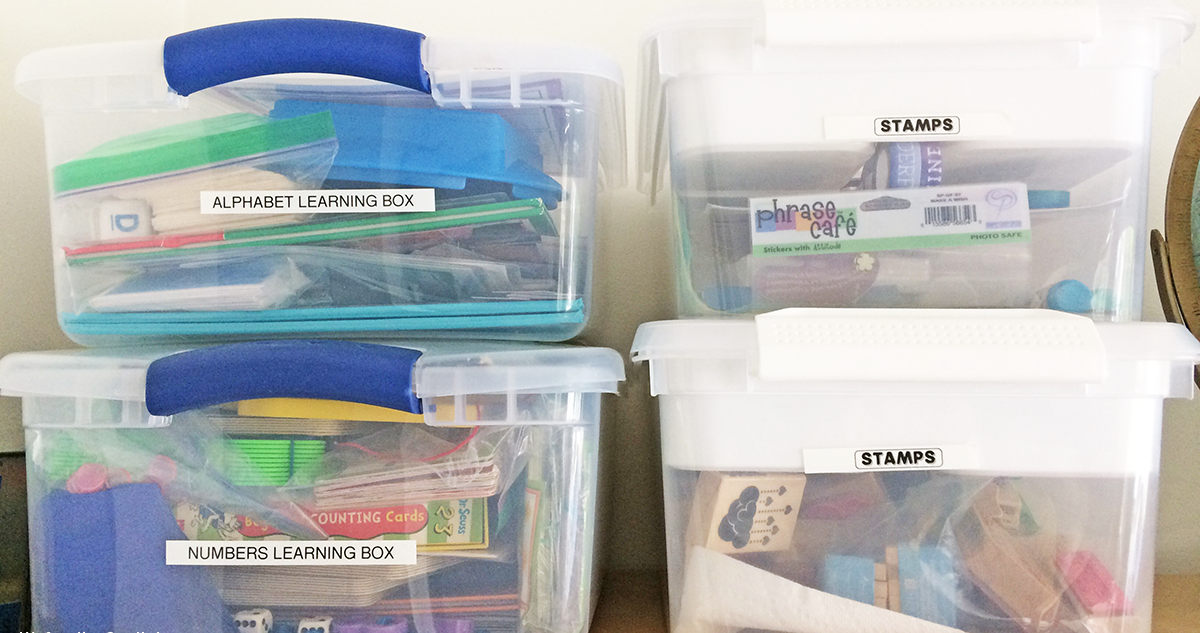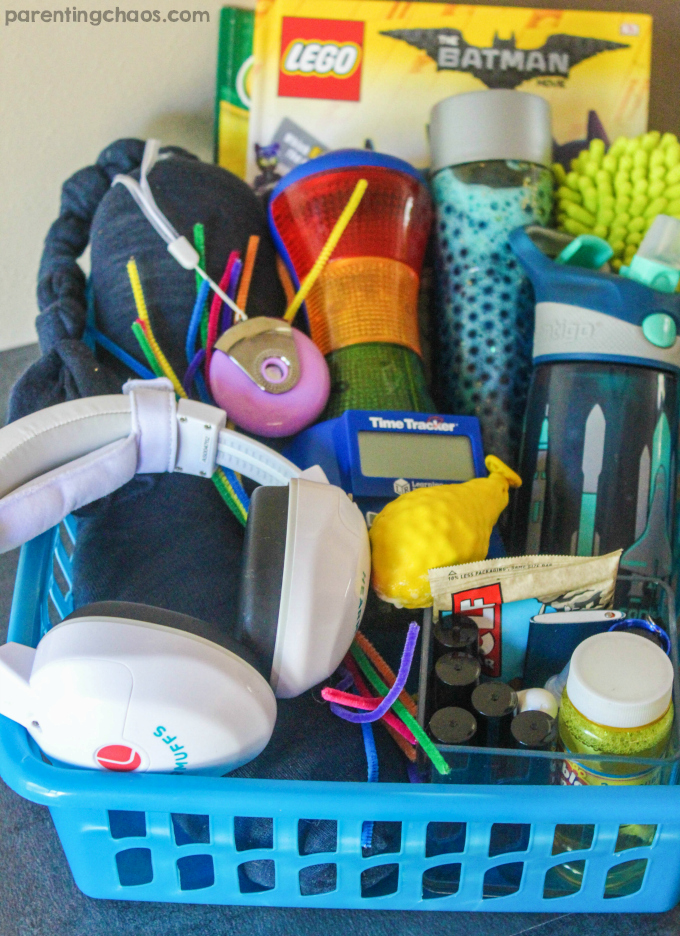Let’s be honest: the kids are probably going to be learning from home for quite some time. Instead of falling back on the make-shift, school-at-home setup you made in the spring, we’ve got some organization inspiration for you to help start the new year off strong.

Everything Has A Home
When all school-related items have a “home” or a place it belongs, it’s easier to find what you need and helps the kids be proactively involved in cleaning up at the end of the day. Because at the end of the school day, your house is still your home.
Supplies on the Wall
Elevate your space by getting the school supplies up and off of the desks/tables. You can find some pegboard from your local home improvement store and organize the hooks however you’d like. The best part is, you can always change your mind and move them around. If you don’t like the look of the pegs, just cover it with fabric to fit your style!

The Mobile-Friendly Storage Option
Short on space and want to make the most of it? Get yourself a cute storage rolling cart that you can wheel out at the beginning of the day and tuck away into a closet at night and on the weekends.
Subject Bins
Each school subject has its own notebooks, worksheets, tools, and books. Keep everything orderly by storing each subject in it’s own bin or tub. No more digging through the stacks of random books to look for the one you need—it’s in its tub! Another beauty of the tubs is that if you need to relocate your kid in the middle of the day, just grab the tubs they need.

Keep Them Focused
There will be plenty of things to distract kids from learning at home. Here are a few ways you could potentially minimize those distractions.
Where to Sit
To save time and money, a lot of parents will probably work with whatever chairs they already have in the house. If you’re looking to improve your seating options, see what the experts are saying is ideal for kids. Bottom line: their feet need to reach the floor and their back needs to be supported.
Sitting still can be hard for a kid—especially if they’re trying to learn at home. Luckily, there are options out there like the Wiggle Seat. This inflatable cushion allows them a little movement while sitting down and can be helpful with kids with sensory processing challenges.
Brighten with Lights
In a great learning environment, effective lighting is a must. Work with the natural light that you have, but be prepared for when natural light changes—the days are getting shorter. Make sure that your kid’s learning space has adequate room lighting, but also the option for additional lighting. Keep it simple, or find a fun lamp to spruce up the place.
Everyone Knows the Schedule
Whether synchronous or asynchronous, keeping track of assignments and virtual meetings will be a challenge.
- You could use customizable printable schedule templates to fill out each day or week.
- Go big with chalkboard paint on your walls. Sketch out a calendar, or use it for to-do lists you want to always be visible.
- Don’t forget how technology can help. Set up calendar reminders in your favorite app to send you/your kids push notifications for video meetings and assignment deadlines.
Less Is More
It’s not just a saying. Sometimes simplifying things just makes everything easier.
Take A Break Box
There’s a lot that you can get to help your kid while they’re doing school work. But what about the time that they aren’t? There are definitely going to be those times in which your kid (and probably you) need a break from school. Have a box of go-to sensory or calming activities that can give everyone’s brain a break. You can fill it with coloring, fidget toys, building blocks, dolls—whatever you know you’re kid will gladly play with.
Strategic Supplies
If you can get strategic with your school supplies, they will be the last thing causing you headaches. First, find items that can be multipurpose or help you reduce clutter. A great example: markerboards. Whether on an easel or just a hand-held board, they will help your kid practice writing and math problems without filling up dozens of pieces of paper.
Another way you can get strategic is to keep your extra supplies hidden. Instead of putting every pencil in the house on your kid’s desk, just put one or two and be clear that those are they’re only pencils to work with. Instead of instantly losing every pencil you own around the house, you’ll always have some back-ups tucked away in storage.
Alternative Desks
Let’s face it: desks are the new inflatable pools—every family needs one to stay sane. This means that a lot of retailers are running low on desks for kids. Get creative and find furniture that isn’t marketed for schoolwork—like craft tables. They can be multipurpose for learning from home and not force you to chase down a desk like it’s the Friday after Thanksgiving.


